Birds are a major part of the ecology and biodiversity of Kurdistan. The region is home to hundreds of bird species, some of which are considered endangered.
Kurdistan is home to a variety of habitats, from the high mountains of the Zagros Range to the dry steppes of the northwest, making it an ideal spot for bird watching.
The region is also a major migration route for many species, and numerous birds can be seen passing through Kurdistan. With its wide variety of habitats and rich bird life, Kurdistan is an important site for bird conservation and research.
1. Black Stork
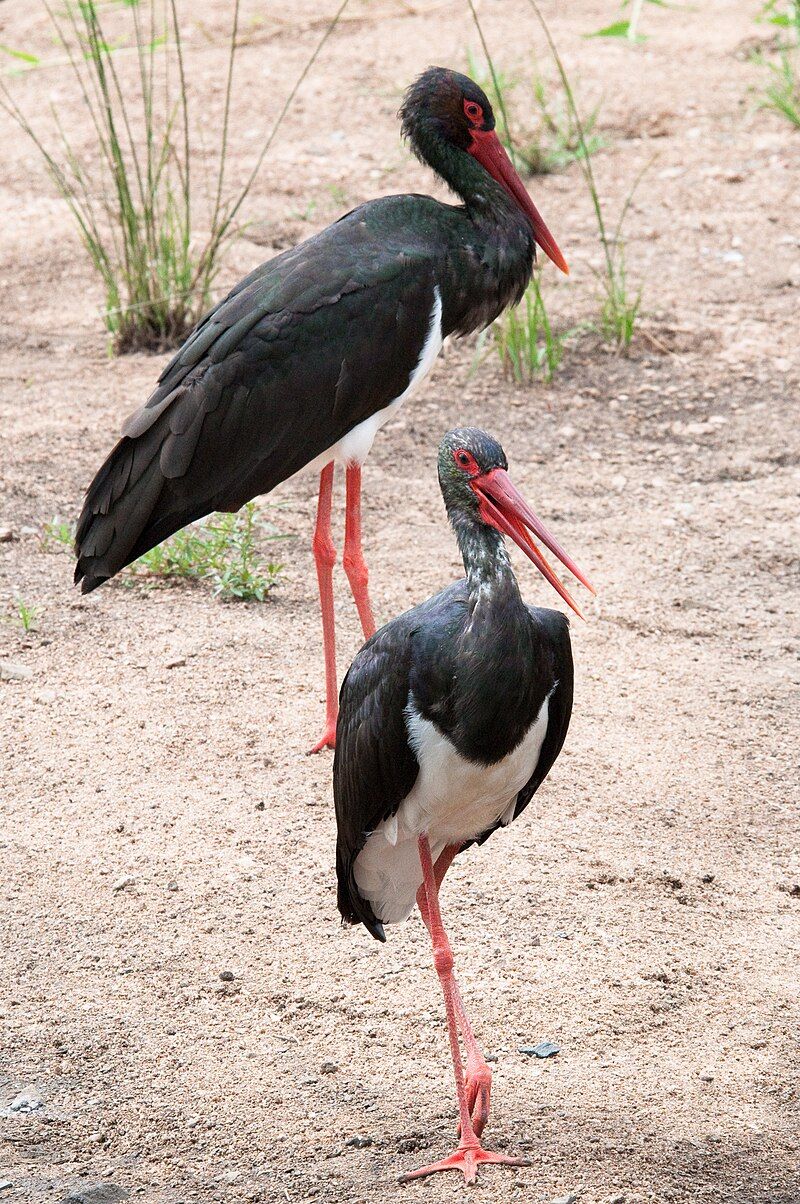
The black stork is a species of stork found in wetland habitats across parts of Europe and Asia. It has a blackish plumage on its head, wings, and tail, and a white underbelly. The black stork is a large bird, standing around three feet tall, with a wingspan of up to four feet.
This species belongs to the Ciconiidae family, which includes other large wading birds such as herons, ibises, and flamingos. The black stork was first described by the famous Swedish botanist and zoologist Carl Linnaeus in 1758.
He named it in the 10th edition of his Systema Naturae. This monumental work is considered to be the starting point of modern taxonomy and is still used as the basis for many scientific classifications today.
Since its first description, the black stork has been the subject of various studies by ornithologists, who have studied its behavior, habitat, and other aspects of its biology.
| Kingdom | Animalia |
| Phylum | Chordata |
| Class | Aves |
| Order | Ciconiiformes |
| Family | Ciconiidae |
| Genus | Ciconia |
| Species | C. nigra |
2. Plovers and Lapwings
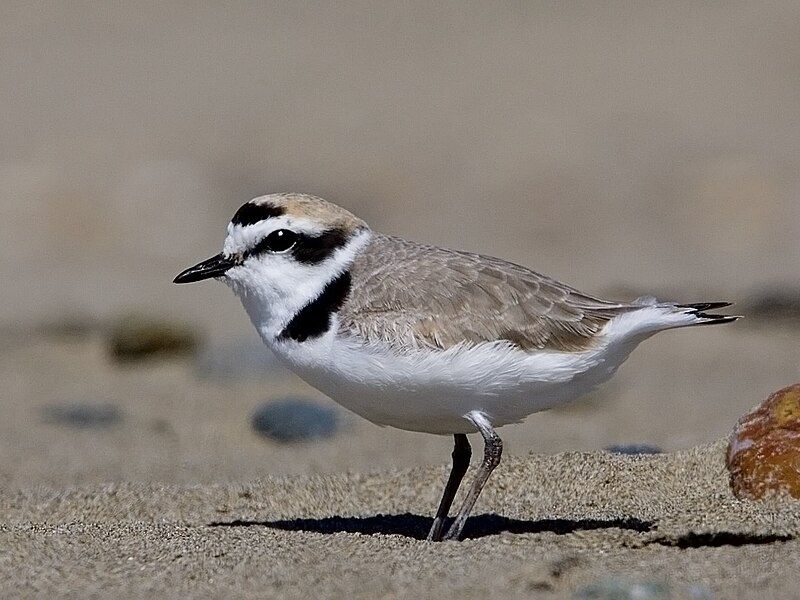
The bird family Charadriidae is a large bird family that encompasses a variety of species, including plovers, dotterels, and lapwings. These birds are found in a wide range of habitats across the globe, from coastal areas to wetlands, grasslands, and meadows.
These species are all united by their shared physical characteristics, including their long legs and short wings. The family contains a total of 69 species, which are further divided into 10 genera based on minor differences in their appearance and behavior.
For instance, the plovers are generally smaller than the dotterels and lapwings, and they have distinctive black and white plumage. Dotterels, on the other hand, have a brownish coloration with white stripes on their wings and chest.
Lapwings, meanwhile, are larger than the other two species and have an iconic crest on their head. Despite their differences, all of these birds are related and belong to the Charadriidae family.
| Kingdom | Animalia |
| Phylum | Chordata |
| Class | Aves |
| Order | Charadriiformes |
| Family | Charadriidae |
3. Pygmy Cormorant
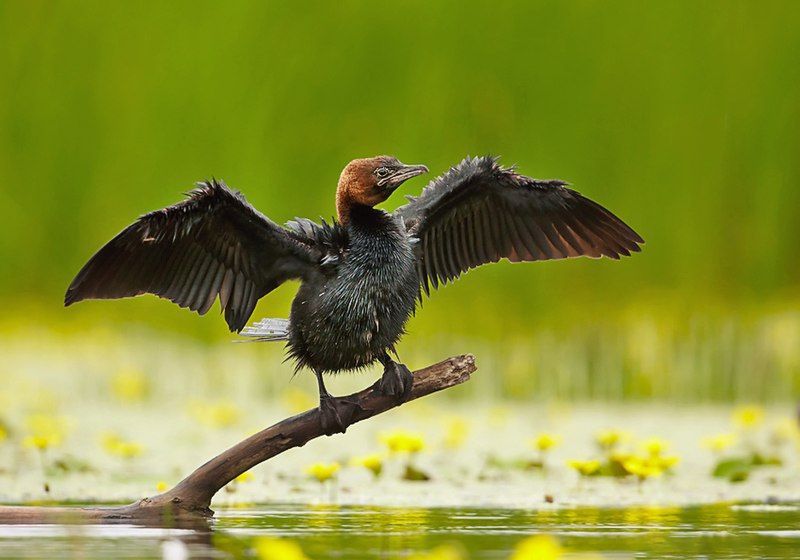
The pygmy cormorant is a small seabird belonging to the Phalacrocoracidae family. It is found in southeastern Europe and southwestern Asia and is partially migratory.
Northern populations of this species migrate to more southern areas within its breeding range during the winter months. It is a rare migrant to Western Europe, and only a few individuals of this species have been recorded there.
The pygmy cormorant is a relatively small species of bird, with adults reaching lengths of only 45 to 53 centimeters. It has black plumage with a chestnut brown head and neck and a white patch on its lower belly.
Its diet consists mainly of fish, which it hunts from the surface of the water. The pygmy cormorant is a species of conservation concern, as its population has been declining in recent years due to habitat destruction and pollution.
It is also threatened by illegal hunting and egg collection. In order to protect this species, conservation efforts have been put in place, such as protected areas and the implementation of laws to restrict hunting and egg collection.
Furthermore, measures have been taken to reduce the amount of pollution in the areas where the pygmy cormorant resides. These efforts will hopefully help to ensure that the population of this species will remain stable in the future.
| Kingdom | Animalia |
| Phylum | Chordata |
| Class | Aves |
| Order | Suliformes |
| Family | Phalacrocoracidae |
| Genus | Microcarbo |
| Species | M. pygmaeus |
4. Cuckoos
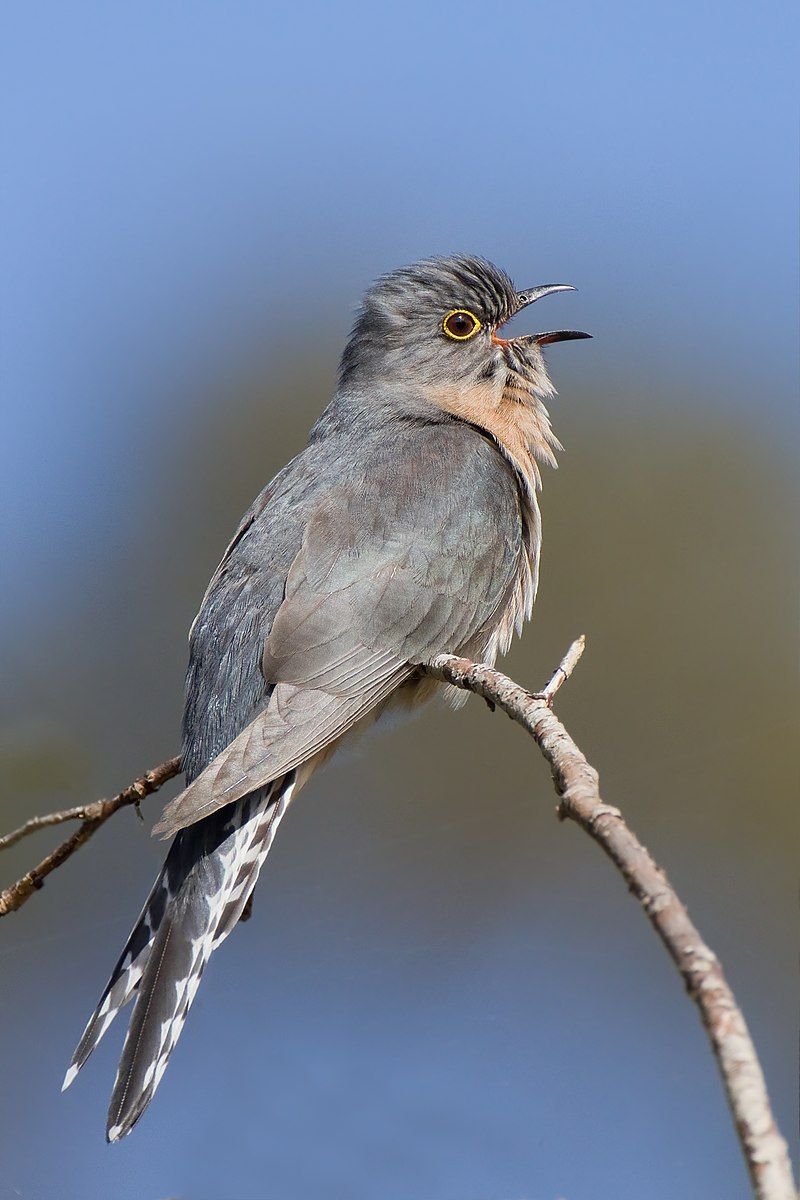
Cuckoos are a part of the Cuculidae family, the only order in the Cuculiformes. The Cuculidae family consists of several different types of birds, such as the common or European cuckoo, roadrunners, koels, malkohas, couas, coucals, and anis.
The coucals and anis are sometimes considered to be different families, the Centropodidae and Crotophagidae, respectively. Cuckoos can be found in many habitats, from forests and woodlands to open fields and grasslands.
They are known for their characteristic call, which is often heard in the early morning hours. Cuckoos feed mostly on insects and small invertebrates, and their diet may vary depending on the species.
Cuckoos also have a variety of adaptations, such as long legs for running and catching prey, and a wide range of vocalizations. They are also able to migrate long distances, which helps them to find food and suitable nesting sites.
| Kingdom | Animalia |
| Phylum | Chordata |
| Class | Aves |
| Clade | Otidimorphae |
| Order | Cuculiformes |
| Family | Cuculidae |
5. Osprey
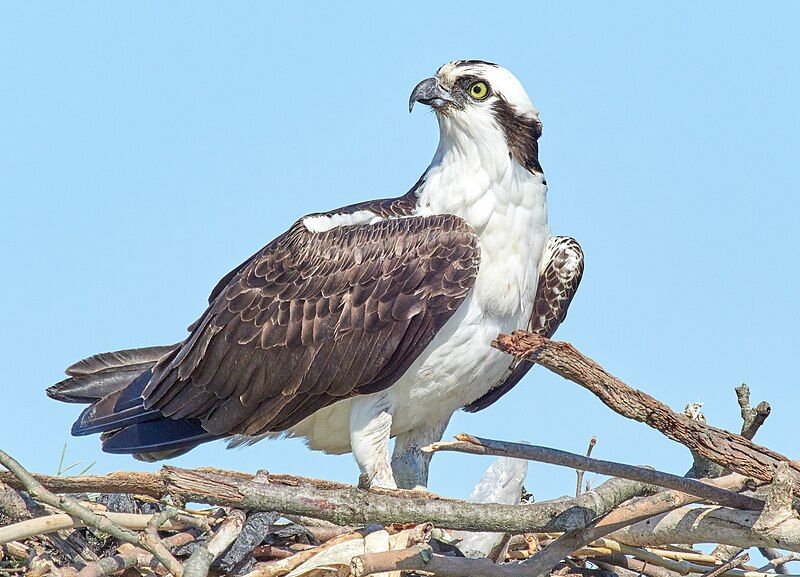
The Osprey is a large bird of prey that can be found across the globe. It is also referred to as the sea hawk, river hawk, and fish hawk. It measures between 60 cm and 180 cm in length and has a wingspan of 180 cm.
The Osprey has brown upperparts and a predominantly greyish head and underparts. The Osprey is a diurnal bird, meaning it is active during the day. Its primary source of food is fish, which it hunts and catches with its sharp talons and beak.
Ospreys usually nest near large bodies of water such as rivers, lakes, and oceans. The Osprey is an impressive bird of prey and an important part of the global ecosystem. Populations of Ospreys have been declining in some areas due to human activity and environmental change.
It is important to protect this species so that future generations can continue to enjoy the beauty and balance it brings to the world.
| Kingdom | Animalia |
| Phylum | Chordata |
| Class | Aves |
| Order | Accipitriformes |
| Family | Pandionidae |
| Genus | Pandion |
| Species | P. haliaetus |
6. Oystercatchers
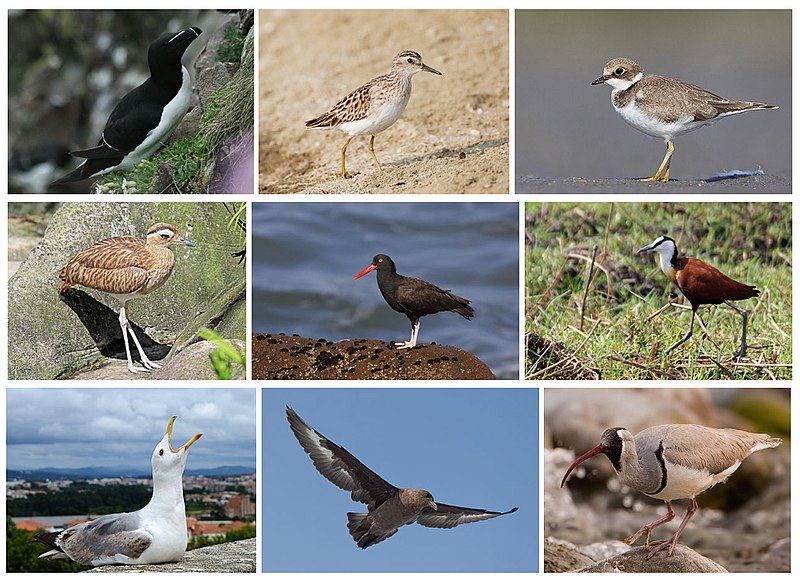
Charadriiformes is a large and varied order of birds that consists of around 390 species, found all over the world. Most of these birds inhabit areas close to water sources, such as rivers, lakes, and oceans, and feed on smaller animals and invertebrates.
However, some species of Charadriiformes are pelagic, which means they are adapted to living in the open ocean and feed on the abundance of ocean life.
Other species of Charadriiformes can be found in desert regions, where they are usually well-adapted to the dry climate and search for food in the sand. Finally, a select few species of Charadriiformes are found in dense forests, where they forage for food among the trees.
| Kingdom | Animalia |
| Phylum | Chordata |
| Class | Aves |
| Clade | Gruimorphae |
| Order | Charadriiformes |
7. Red-crested Pochard
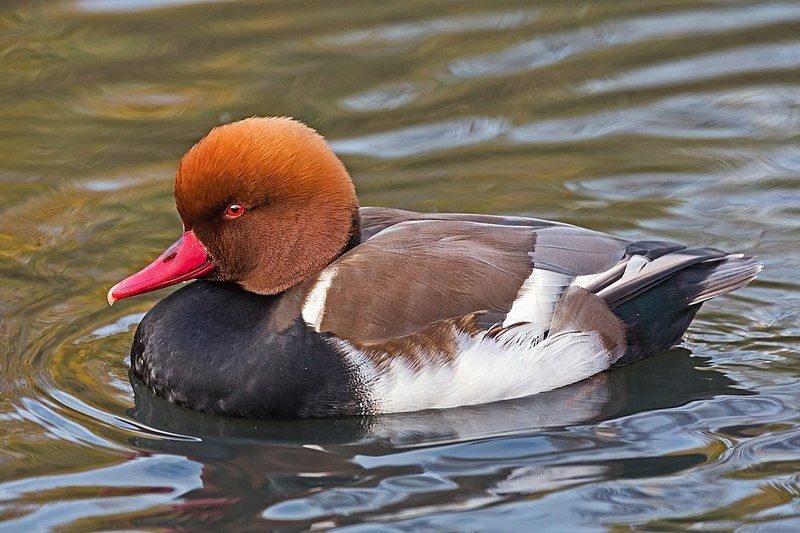
The red-crested pochard is an aquatic bird that belongs to the diving duck family. It is a large species of duck and is easily identified by its striking red crest. The scientific name of this bird is derived from two languages – Greek and Latin.
The word ‘Netta’ is derived from Greek and it means ‘duck’. The Latin word ‘Rufina’ means ‘golden-red’ which is in reference to the bird’s red crest. The red-crested pochard is found in parts of Europe, Asia, and Africa.
The bird prefers shallow, freshwater wetlands for its habitat. It feeds mainly on aquatic plants, insects, and small fish. The red-crested pochard is a beautiful bird and a delight to watch. It is a migratory species and can be seen in large flocks during winter months.
The species is considered to be of least concern in terms of conservation status.
| Kingdom | Animalia |
| Phylum | Chordata |
| Class | Aves |
| Order | Anseriformes |
| Family | Anatidae |
| Genus | Netta |
| Species | N. rufina |
8. African Darter
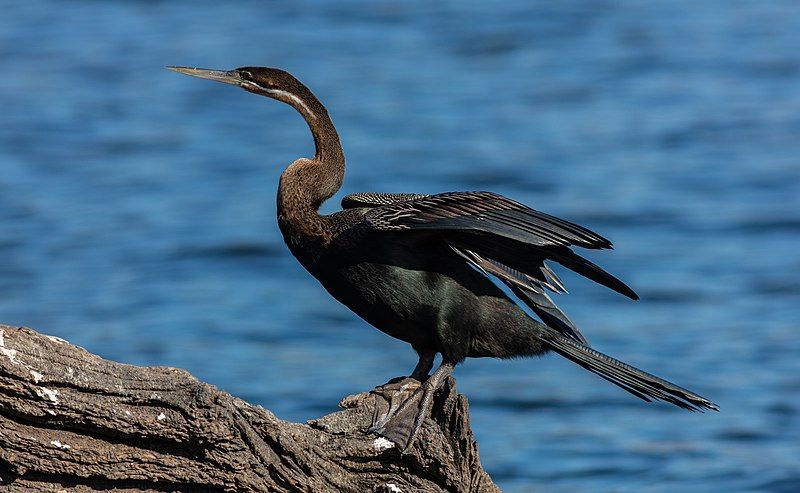
The African darter, also known as the snakebird, is a species of aquatic bird found in sub-Saharan Africa and Iraq. It is a long, slender bird with a long neck and a long, pointed bill. Its body is mostly black with some white markings on its wings and head.
Its long tail has two separate lobes that it uses for swimming and diving. The African darter is a strong swimmer and an excellent fisherman. It dives into the water and uses its long bill to catch small fish and other aquatic prey. It also feeds on aquatic vegetation.
It is often seen perching on floating logs or on the shoreline, scanning the water for prey.The African darter is a social species and often forms large flocks. It breeds in freshwater wetlands, usually in marshes and swamps.
It is an important species for wetland conservation, as it helps to keep the water clean by feeding on fish, aquatic insects, and vegetation. The African darter is an important species for its range.
It serves as an important food source for humans and other animals, and its presence is an indication of healthy wetland habitats. It is also a critical part of the food web, as it helps to control prey populations, which helps to maintain a healthy balance in the ecosystem.
| Kingdom | Animalia |
| Phylum | Chordata |
| Class | Aves |
| Order | Suliformes |
| Family | Anhingidae |
| Genus | Anhinga |
| Species | A. rufa |
9. Demoiselle Crane
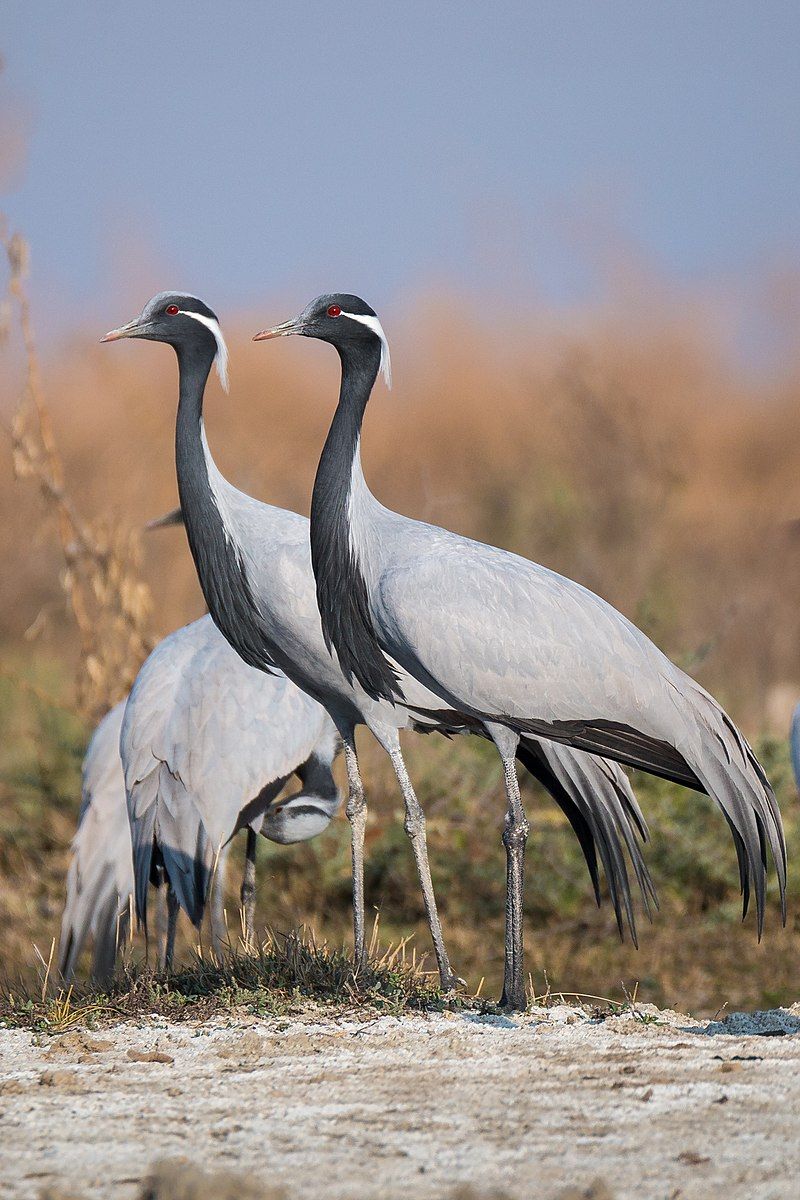
The demoiselle crane is a species of crane found mainly in central Eurosiberia. Its range stretches from the Black Sea in the west to Mongolia and Northeast China in the east. There is also a smaller breeding population of demoiselle cranes in Turkey.
Demoiselle cranes are migratory birds, meaning they move from one location to another in order to breed and feed. In the spring, they migrate north to breed in the central Eurosiberian region, and in the fall they migrate south for the winter.
These cranes can be seen in large flocks, typically numbering in the hundreds, and they feed on insects, small mammals, and plant materials.
The demoiselle crane is an important species in its Eurasian range, as it helps to maintain healthy ecosystems and serves as an important food source for many predators.
| Kingdom | Animalia |
| Phylum | Chordata |
| Class | Aves |
| Order | Gruiformes |
| Family | Gruidae |
| Genus | Grus |
| Species | G. virgo |
10. Great Bustard
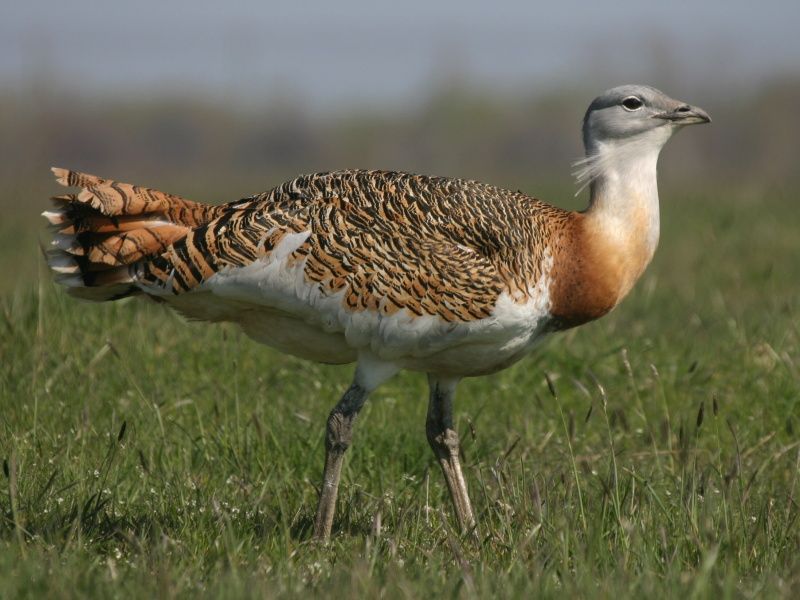
The great bustard is an impressive bird belonging to the bustard family. It is the only living member of the genus Otis, and it is found in various places across the world.
It breeds in open grasslands and farmland, such as those found in northern Morocco, South, and Central Europe, and temperate Central and East Asia. This species is known for its large size and its ability to fly long distances.
It is mainly found in open, dry areas and it feeds on insects, small mammals, and other small animals. The great bustard has a very wide habitat range, which is why it is considered a species of least concern by the IUCN.
The species is threatened by various factors, such as habitat loss due to agricultural activities, hunting, and human disturbance. It is also vulnerable to climate change, which can affect its food supply and nesting grounds.
Conservation efforts are being made to protect this species, such as the establishment of protected areas and the reintroduction of captive-bred individuals into the wild. Overall, the great bustard is an impressive species that is unique in its own right.
Its large size and wide habitat range make it a fascinating creature, and its conservation is of utmost importance.
| Kingdom | Animalia |
| Phylum | Chordata |
| Class | Aves |
| Order | Otidiformes |
| Family | Otididae |
| Genus | Otis |
| Species | O. tarda |
11. Great Spotted Cuckoo
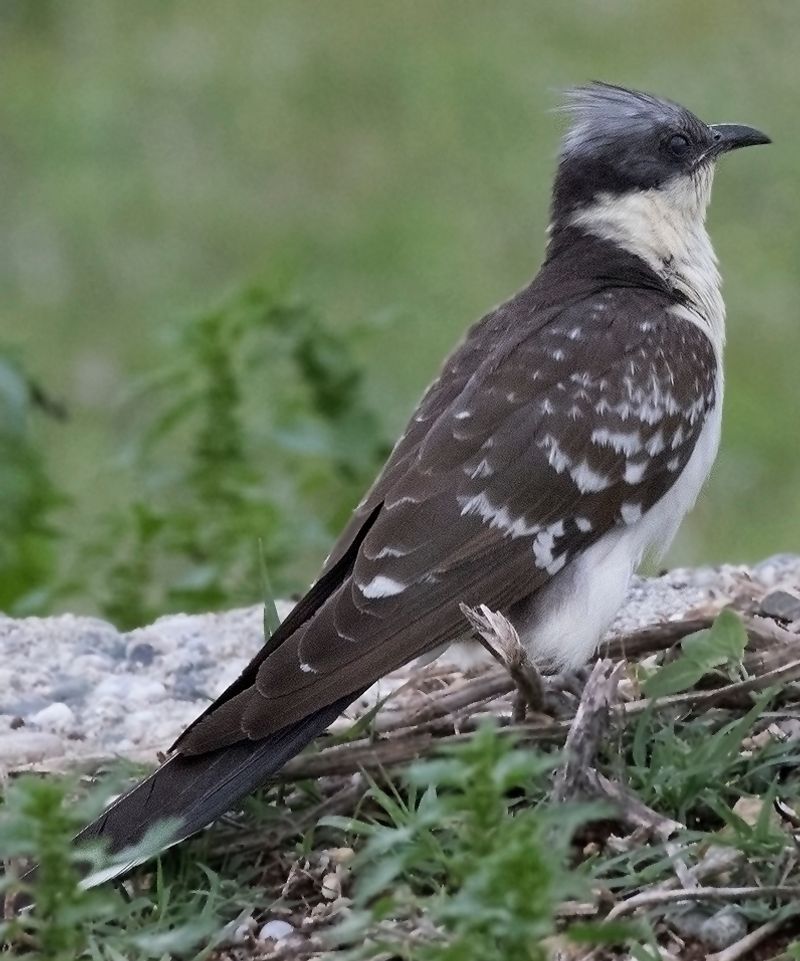
The great spotted cuckoo is a species of bird that belongs to the Cuculiformes family, which is also home to roadrunners, anis, and coucals. It is found in several regions across Africa and the Mediterranean Basin.
This bird species is a brood parasite, which means it lays its eggs in the nests of other birds, mostly the Eurasian magpie. This behavior is beneficial for the cuckoo as the young birds are taken care of by the hosts.
However, it places a burden on the other birds, as the cuckoo chicks often outcompete their hosts’ own young for food. As a result, the host birds may end up raising the cuckoo chicks, potentially at the expense of their own young.
| Kingdom | Animalia |
| Phylum | Chordata |
| Class | Aves |
| Order | Cuculiformes |
| Family | Cuculidae |
| Genus | Clamator |
| Species | C. glandarius |
12. Great Bittern
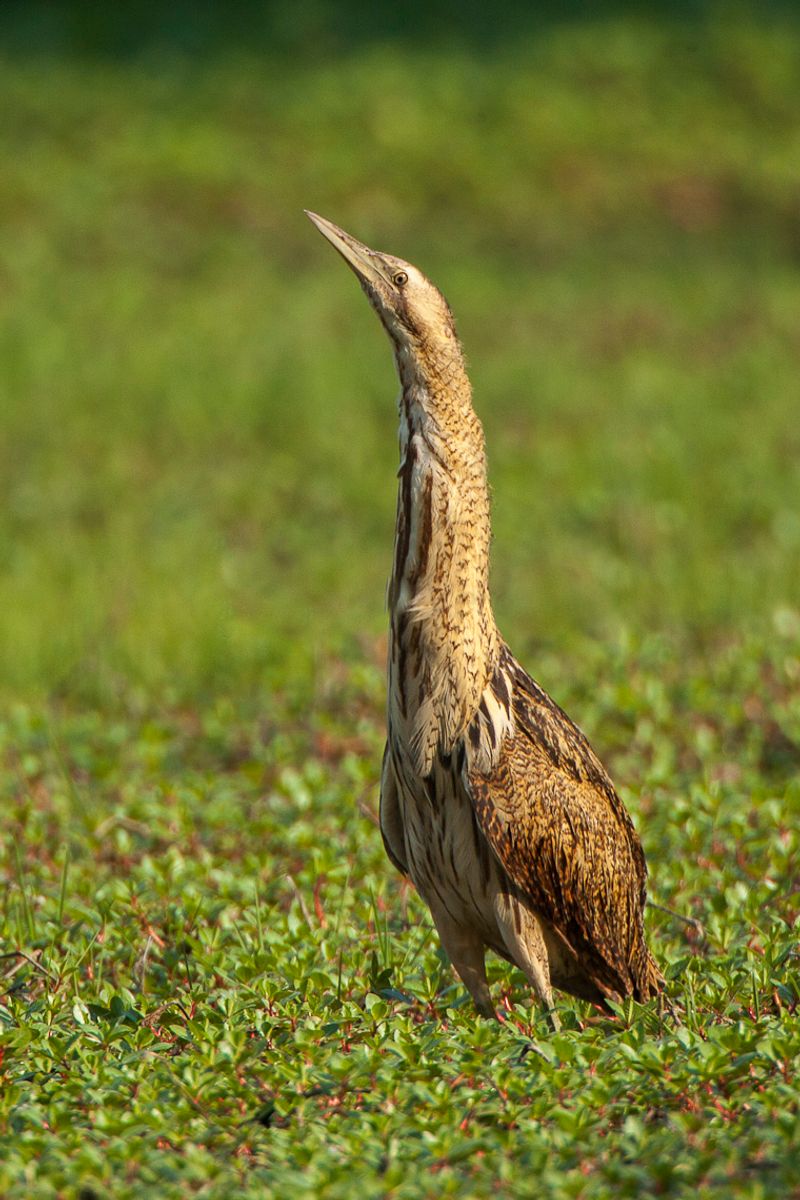
The Eurasian bittern, also known as the great bittern, is a wading bird from the bittern subfamily of the heron family Ardeidae. It is found in two distinct subspecies: the northern race and the southern race.
The northern race is found throughout Europe, in parts of the Palearctic region, and along the northern coast of Africa. Meanwhile, the southern race is only found in parts of southern Africa. The Eurasian bittern is a large bird, often reaching up to 1.2 meters in length.
Its plumage is typically a mottled shade of brown, and its head and neck are marked with stripes of black, white, and buff. It has a wide wingspan, and its long legs are adapted for wading in shallow waters.
The Eurasian bittern is a solitary bird, living in wetlands and marshes. It feeds mainly on fish, frogs, and other small aquatic animals. It is also a vocal bird, making a booming call during the breeding season.
The Eurasian bittern is classified as vulnerable on the IUCN Red List. Its population has been in decline due to habitat destruction and degradation, and the species is now protected in several countries.
| Kingdom | Animalia |
| Phylum | Chordata |
| Class | Aves |
| Order | Pelecaniformes |
| Family | Ardeidae |
| Genus | Botaurus |
| Species | B. stellaris |
13. Ferruginous Duck
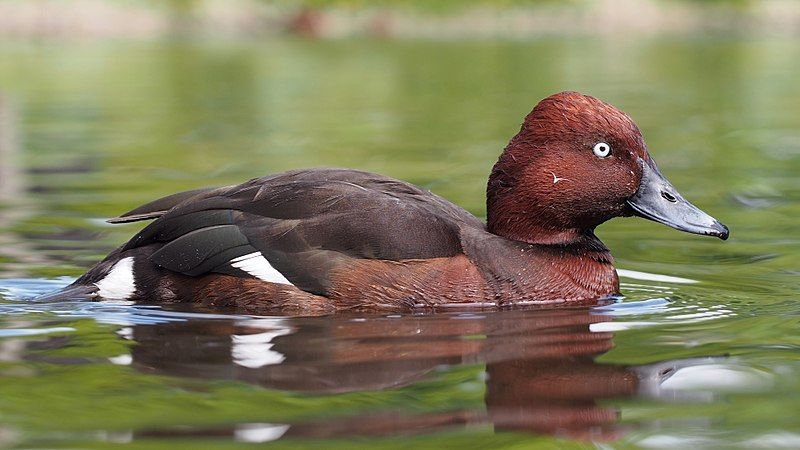
The ferruginous duck, also known as the ferruginous pochard, common white-eye, or white-eyed pochard, is a medium-sized diving duck from the Eurosiberian region. It is a unique species, as its scientific name is derived from Greek.
The genus Aithuia is derived from the term aithuia, which was an unidentified seabird mentioned by authors such as Hesychius and Aristotle.
Meanwhile, the species name Nyrok is taken from the Russian word for a duck. The ferruginous duck is a species of diving duck, which means that it spends much of its time underwater.
It is a relatively large bird, and it is mainly found in Eurasia, although it does sometimes migrate to other areas such as Africa and the Middle East. Its plumage is typically greyish-brown, with a reddish tinge to its feathers.
It also has a distinctive white eye-ring, which is why it is sometimes referred to as the common white eye or white-eyed pochard. The ferruginous duck is an important species in the Eurosiberian region, as it is an indicator of the health of local wetlands.
It feeds on insects, fish, and small mammals, and its presence in a wetland is usually an indication that the ecosystem is in good condition.
It is also an important species for hunters, as it is a popular game bird. Overall, the ferruginous duck is a unique and important species in the Eurosiberian region. Its scientific name is derived from Greek, and it is an important indicator of the health of local wetlands.
It is also a popular game bird, and it is highly valued by hunters.
| Kingdom | Animalia |
| Phylum | Chordata |
| Class | Aves |
| Order | Anseriformes |
| Family | Anatidae |
| Genus | Aythya |
| Species | A. nyroca |
14. Hoopoes
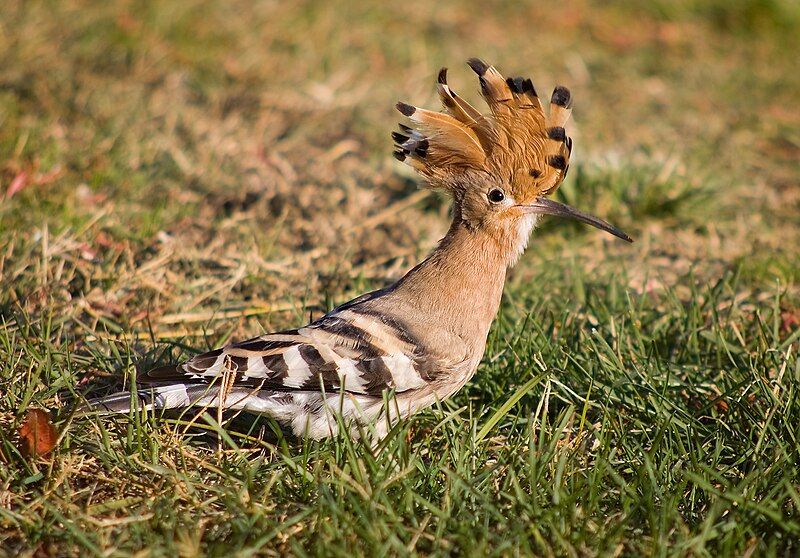
Hoopoes are a type of bird that is found in Africa, Asia, and Europe. They are easily recognizable due to their unique “crown” of feathers. There are three species that are still alive today and one that is now extinct.
For a long time, all four species were considered to be one species, Upupa epops. Hoopoes are colorful birds that are often found in open habitats such as grasslands, savannas, and woodland clearings.
They measure around 28–33 cm in length and have fairly large wings for their body size. They have a long downcurved bill that has a black tip and a short tail. The distinctive “crown” of feathers is what sets them apart from other birds, and can vary from species to species.
The three living species of hoopoe are found in different parts of the world. The Eurasian hoopoe is found in Europe and across Asia, the African hoopoe is found in sub-Saharan Africa, and the Madagascar hoopoe is found in Madagascar.
All three species have similar appearances, but the African hoopoe has a more reddish-brown coloration, while the Eurasian hoopoe is more grayish-brown. The extinct species, the Cuban hoopoe, was found in Cuba and was thought to be closely related to the African hoopoe.
Hoopoes are omnivorous birds, and their diet consists of insects, small reptiles and amphibians, fruits, and flower petals. They are solitary birds and often nest in cavities in trees, walls, or even in the ground.
They are known to be great parents, defending their nest and young from predators and other intruders. Hoopoes have long been admired for their striking appearance, and have been featured in many works of art and literature.
They are also popular symbols in many cultures, representing hope, joy, and renewal.
| Kingdom | Animalia |
| Phylum | Chordata |
| Class | Aves |
| Order | Bucerotiformes |
| Family | Upupidae |
| Genus | Upupa |
15. Bulbuls
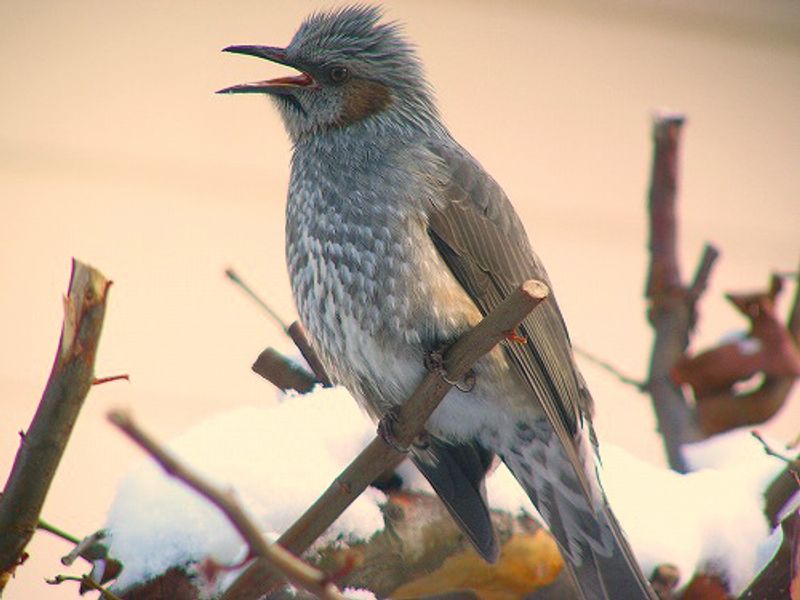
The bulbuls are part of a larger family of birds known as Pycnonotidae. This family includes other birds such as greenbuls, brown buls, leafloves, and bristlebills. These birds are generally of medium size and are known as passerines or songbirds.
They are distributed across a wide range of areas, including most of Africa, the Middle East, tropical Asia to Indonesia, and even north as far as Japan.
This large range reflects the adaptability of the species and their ability to live in many different habitats, from dry deserts to tropical rainforests.
The species within this family have many different traits, from their vocalizations to their physical appearance, allowing them to thrive in a variety of regions.
| Kingdom | Animalia |
| Phylum | Chordata |
| Class | Aves |
| Order | Passeriformes |
| Family | Pycnonotidae |
16. Long-tailed Tit
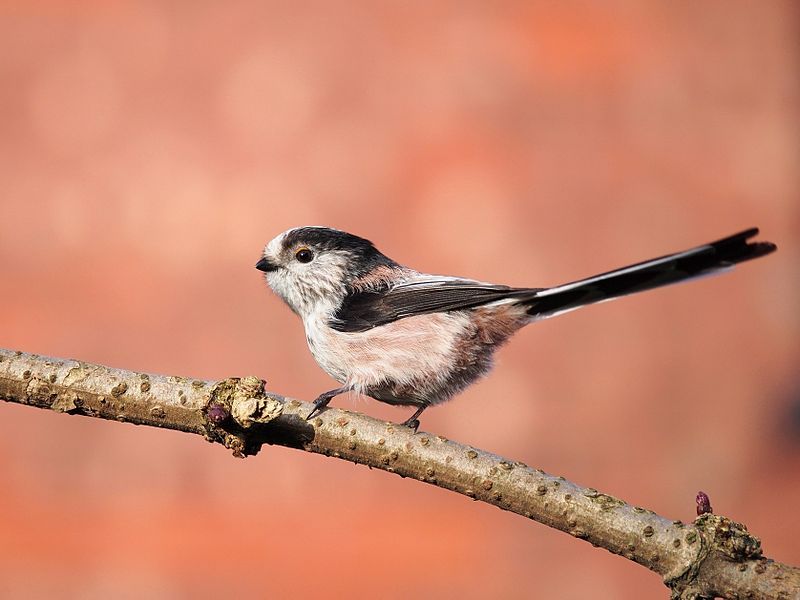
The long-tailed tit is a species of small bird found in many regions of Europe and the Palearctic. It is also known as the long-tailed bushtit and is easily recognizable by its long tail.
It is a common bird, found in a variety of habitats, from woodlands and gardens to parks and meadows.
The scientific name for the species is Aegithalos, derived from the term used by Aristotle for some European tits, including the long-tailed tit. The long-tailed tit is a small bird, with a body length of between 11 and 16 cm.
Its wingspan is typically between 13 and 17 cm, and its tail is usually between 6 and 11 cm. The plumage of the bird is generally grey, with white and black markings.
Its tail is particularly long and distinctive, hence its common name. The long-tailed tit is a social bird, and often seen in flocks of up to 40 individuals. It is an omnivorous species, feeding on a wide variety of food items, from insects and spiders to berries and seeds.
It is an important species for controlling insect populations and is also known to take advantage of human-made resources, such as bird feeders. The long-tailed tit is a common bird found throughout Europe and the Palearctic.
This species is easily recognizable by its long tail and is an important species for controlling insect populations. Its scientific name, Aegithalos, is derived from the term used by Aristotle for some European tits, including the long-tailed tit.
| Kingdom | Animalia |
| Phylum | Chordata |
| Class | Aves |
| Order | Passeriformes |
| Family | Aegithalidae |
| Genus | Aegithalos |
| Species | A. caudatus |
17. Painted Snipes
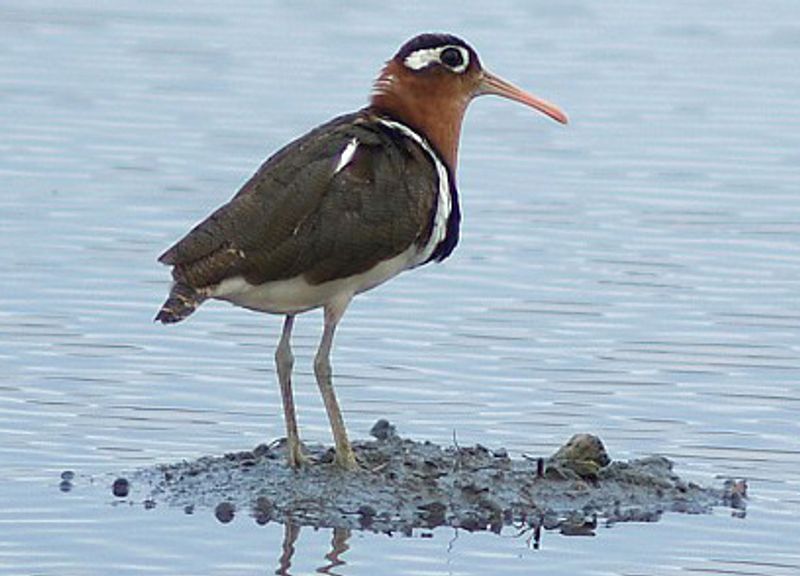
The Rostratulidae family is a group of wading birds that is commonly referred to as painted snipes. This family is composed of two different genera, Rostratula and Nycticryphes. Rostratula usually has long, straight bills, while Nycticryphes have short, curved bills.
Both genera are known for their bright colors, which often include stripes and spots of various hues. The mostly plain underparts of these birds may be streaked or barred. These birds are typically found in wetlands, such as marshes, swamps, lakes, rivers, and coasts.
They feed on insects, crustaceans, mollusks, and fish. They are usually found in pairs or small groups, and they often use their long bills to probe or stir up the mud in search of food. They also use their bills to probe and pick food from vegetation.
The Rostratulidae family is an important part of wetland ecosystems, as they help to keep the food chain in balance.
| Kingdom | Animalia |
| Phylum | Chordata |
| Class | Aves |
| Order | Charadriiformes |
| Family | Rostratulidae |
18. Eurasian Reed Warbler
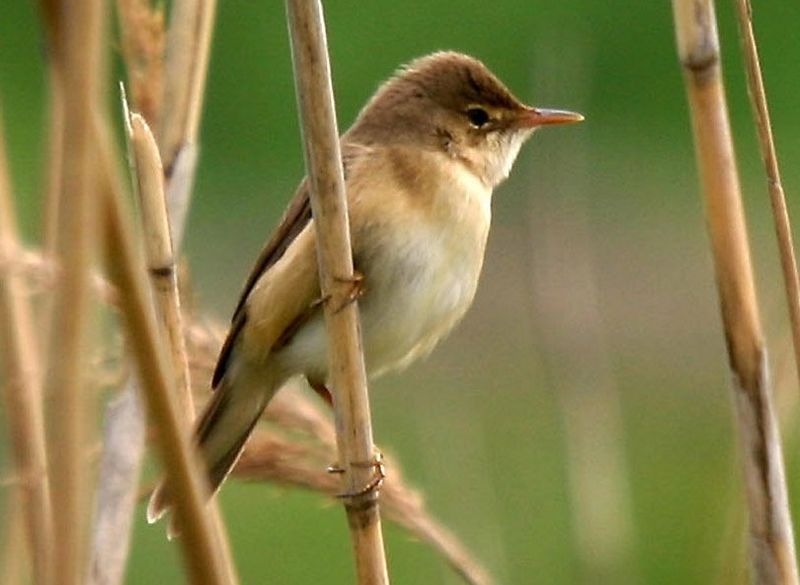
The common reed warbler is a species of Old World warbler that belongs to the genus Acrocephalus. This species of warbler is found throughout Europe, where it breeds and migrates in the temperate western Palaearctic.
It will migrate to sub-Saharan Africa during the winter months, but it is also a resident species in many parts of Africa. The common reed warbler is a small bird that is mainly found around wetlands, where it will forage for food and build its nest.
Its diet consists of insects and other small invertebrates, which it will gather from the reeds and other vegetation. This species is very adaptable and can survive in a variety of different habitats, such as marshes, wetlands, and agricultural fields.
The common reed warbler is a species that is not considered to be threatened, and its population is considered to be stable.
| Kingdom | Animalia |
| Phylum | Chordata |
| Class | Aves |
| Order | Passeriformes |
| Family | Acrocephalidae |
| Genus | Acrocephalus |
| Species | A. scirpaceus |
19. Common Pochard
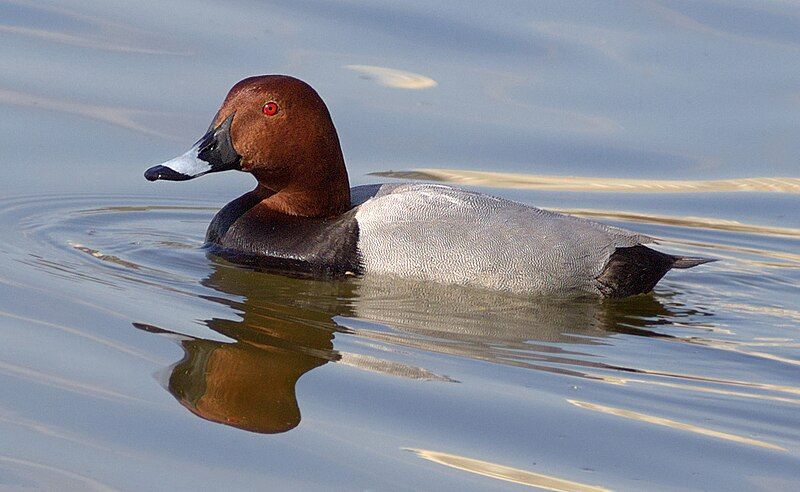
The Common Pochard is a type of duck that is found in freshwater and saltwater habitats. It is a medium-sized diving duck, typically measuring around 46-58 cm long and weighing between 600-900 grams.
The scientific name of the Common Pochard is derived from the Greek aithuia, which is an unidentified seabird mentioned in the writings of authors such as Hesychius and Aristotle.
Additionally, the scientific name also contains Latin ferina, which means “wild game”, and is derived from the Latin word ferus, meaning “wild”. This shows that the Common Pochard was seen as a type of wild game bird in the past.
The Common Pochard is known for its bright colors, including red and white patches on the head and neck, and a black chest and back. It has a greyish-brown body and a yellow-orange beak.
The Common Pochard can be found in several parts of Europe and Asia, as well as in North Africa. It is a gregarious bird, often found in groups, and is a strong swimmer. It usually feeds on aquatic vegetation, such as water lilies, as well as mollusks, crustaceans, and insects.
| Kingdom | Animalia |
| Phylum | Chordata |
| Class | Aves |
| Order | Anseriformes |
| Family | Anatidae |
| Genus | Aythya |
| Species | A. ferina |
20. Red-breasted Goose
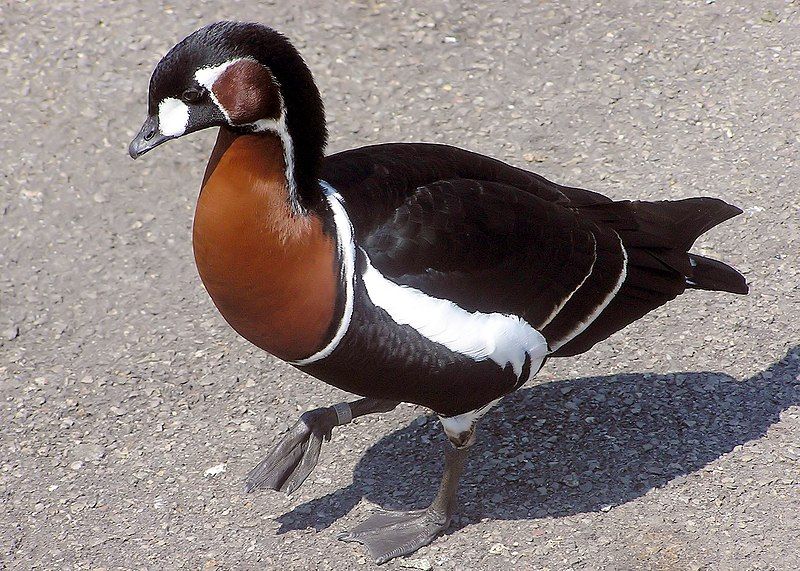
The red-breasted goose is a beautiful species of goose with a bright red breast and black body. It belongs to the genus Branta, which includes geese from Eurasia.
According to the International Union for Conservation of Nature and Natural Resources (IUCN), the red-breasted goose is classified as vulnerable. This means that the species is at risk of extinction due to human activities, such as hunting and habitat loss.
The red-breasted goose has a long history of being hunted for its feathers and meat, and habitat destruction has caused its population to decline significantly. Conservation efforts are needed in order to protect this species and ensure that it does not become extinct.
| Kingdom | Animalia |
| Phylum | Chordata |
| Class | Aves |
| Order | Anseriformes |
| Family | Anatidae |
| Genus | Branta |
| Species | B. ruficollis |
21. Marbled Duck
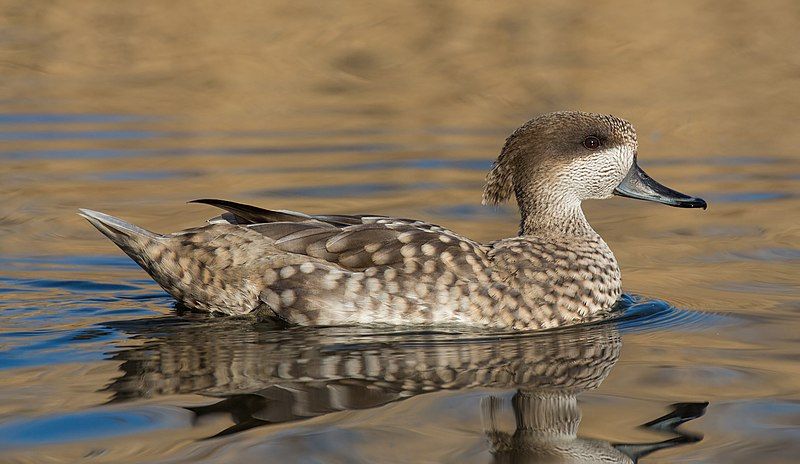
The Marbled Duck, also known as the Marbled Teal, is a species of duck native to southern Europe, northern Africa, and western and central Asia.
Its scientific name, Marmaronetta angustirostris, is derived from the Greek marmaros, which means marbled, and netta, which means duck, as well as Latin angustus, which means narrow or small, and -rostris, which means billed.
This species of duck is medium-sized, with a distinct marbling pattern on its feathers. Its beaks are relatively narrow, which is reflective of its scientific name. The Marbled Duck is found in a variety of habitats, including wetlands, open woodlands, and grasslands.
It feeds mainly on plant material such as seeds, grains, and aquatic plants, and it is known to forage in shallow waters. It is a relatively shy bird that often hides in vegetation when it senses danger.
It is a fairly common species, but its population is declining due to habitat loss and hunting pressure. As such, the Marbled Duck is listed as a species of least concern by the International Union for Conservation of Nature.
| Kingdom | Animalia |
| Phylum | Chordata |
| Class | Aves |
| Order | Anseriformes |
| Family | Anatidae |
| Genus | Marmaronetta |
| Species | M. angustirostris |
22. Smew
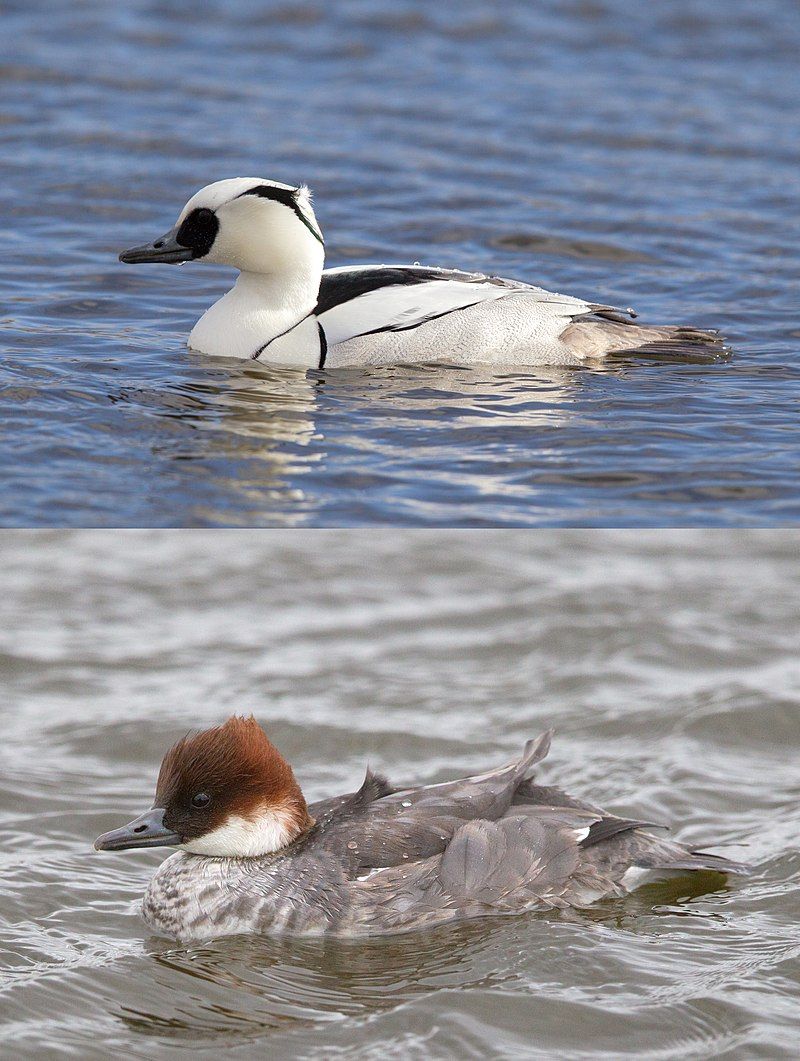
The smew is a species of duck belonging to the genus Mergellus, making it the only living member of this genus. The name Mergellus is derived from the Latin Mergus, meaning duck, while albellus is Latin for white.
This genus is closely related to the Mergus genus and is sometimes classified as part of it. However, it is believed that the smew is more closely related to the goldeneyes than the Mergus genus.
The smew is easily recognizable due to its distinctive white plumage and black-and-white patterned wings. Its unique appearance has earned it the nickname of the “snowy merganser”.
| Kingdom | Animalia |
| Phylum | Chordata |
| Class | Aves |
| Order | Anseriformes |
| Family | Anatidae |
| Genus | Mergellus |
| Species | M. albellus |
Conclusion
Birds in Kurdistan are an important part of the region’s natural environment. The diverse range of species found in Kurdistan provides an important source of food for the local people, as well as an important source of pollination and other ecological services.
The protection of birds in Kurdistan is essential for the continued health of the region’s environment.
Supporting local conservation efforts, such as those of Kurdistan Nature Conservation, is an important step in helping to ensure the health and stability of Kurdistan’s bird populations.